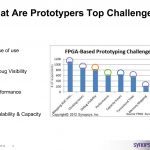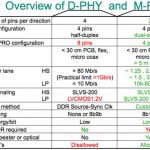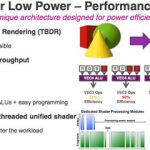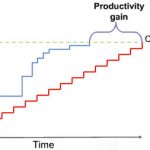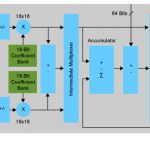Still not convinced on the value of FPGA-based prototyping systems, or using older technology? I’ve been trying to find the story beyond just bigger, badder FPGAs in a box that you pour RTL into – and found some hints in a webinar on the Synopsys HAPS-70 from earlier this year.… Read More
Tag: synopsys
Why Adopt Hierarchical Test for SoC Designs
IC designers have been creating with hierarchy for years to better manage large design sizes, however for the test world the concept of hierarchy and emerging standards is a bit newer. TSMC and Synopsys jointly created a webinarthat addresses hierarchical test, so I’ve attended it this week and summarized my findings here.… Read More
Pre-verified, Integrated Sensor IP Subsystem?
Last year, I said that the launch of ARC based complete sound system IP by Synopsys ring the bell for the opening of a new IP market segment, the “Subsystem IP”. This week, Synopsys has announced the availability of the DesignWare® Sensor IP Subsystem, a complete and integrated hardware and software solution for sensor control applications.… Read More
Any MIPI CSI-3 Host IP Solution for SoCs Interfacing with Sensors?
For those taking a quick look at the various MIPI Interface specification, the first reaction is to realize that they will have to look at MIPI more closely, and that it will take them longer than expected to make sure they really understand the various specifications! Let’s start with the PHY. One specification defines the D-PHY,… Read More
♫ IMG Sitting on the DOK of the Bay…Closin’ Timin’
Scott Fitzgerald is supposed to have said “the rich are not like other people” to Ernest Hemingway (he didn’t). In the same way, processors are not like other blocks, and not because they have more gates (they don’t). However, special approaches to optimizing processors are important because the clock… Read More
Debugging Verification Constraints
In his DAC keynote last year (2012) Mike Mueller of ARM compared how much CPU was required to verify the first ARM versus one of the latest ARM Cortex CPUs. Of course the newer CPU is hundreds of times larger than the first ARM but the amount of verification required was millions of times as much, requiring ARM to construct their own datacenter… Read More
The fixed and the finite: QoR in FPGAs
There is an intriguingly amorphous term in FPGA design circles lately: Quality of Results, or QoR. Fitting a design in an FPGA is just the start – is a design optimal in real estate, throughput, power consumption, and IP reuse? Paradoxically, as FPGAs get bigger and take on bigger signal processing problems, QoR has become a larger… Read More
Minimize the Cost of Testing ARM® Processor-based Designs and Other Multicore SoCs
On my first job out of college as an IC design engineer I was surprised to discover that a major cost of chips was in the amount of time spent on the tester before being shipped. That is still true today, so how would you keep your tester time down, test coverage high and with a minimum number of pins when using multiple processors on a single… Read More
Workload-tuned cores seeing greater interest
Is it possible to design a processor with very high performance and low power consumption? To answer that, embedded illuminati are now focusing on designs tuned to specific workloads – creating a tailored processor that does a few things very efficiently, with nothing extra.… Read More
Aart: Technomic Push-Pull
Aart de Geus gave one of the visionary look to the next 50 years of EDA as a warmup to Stephen Wu’s keynote. EDA is enabling the greatest push-pull ever, part of an exponential change on a scale never before seen.
Technologies seem to go through a 50 year technical push phase (driven by improving the technology) followed by a 50… Read More


